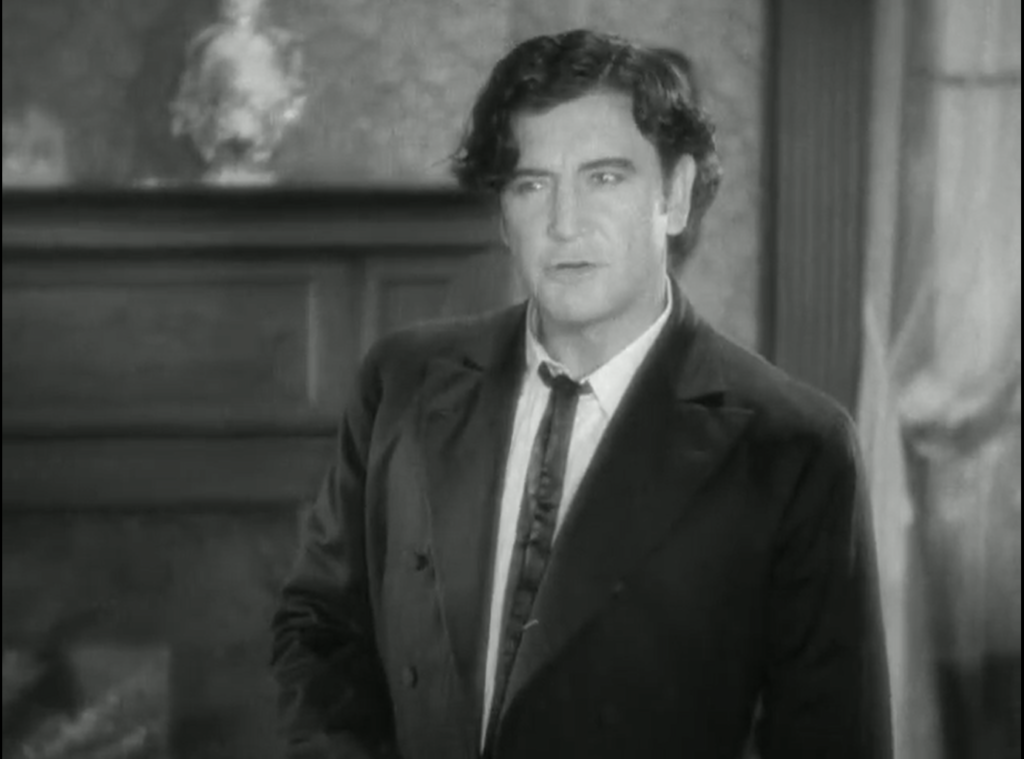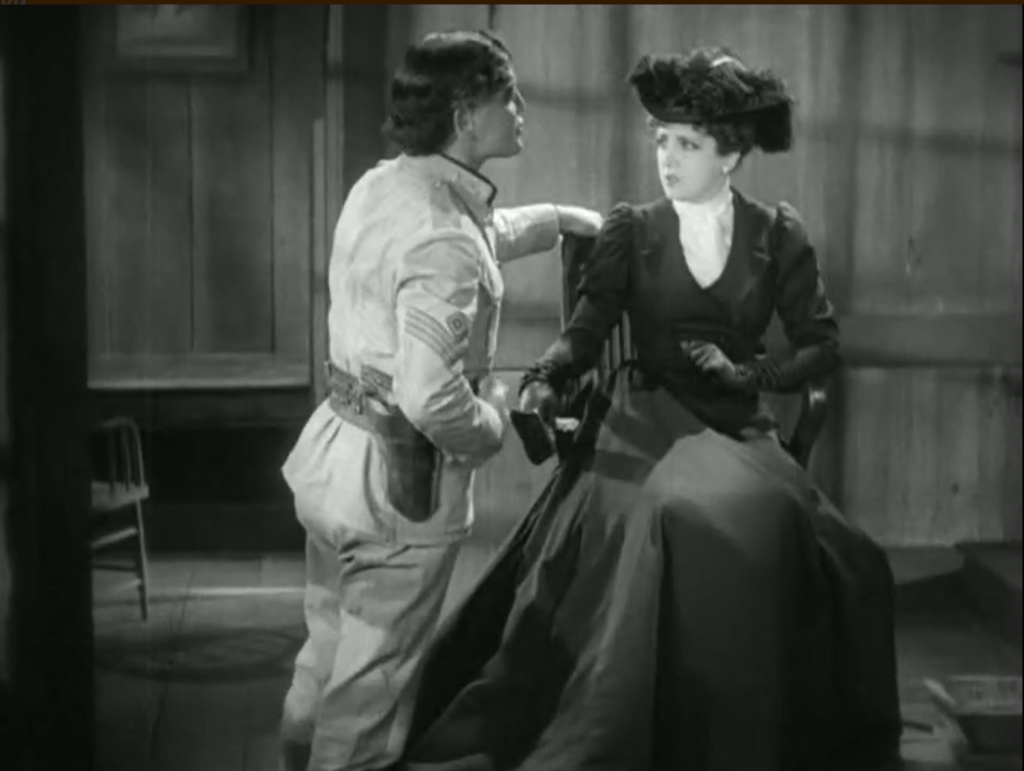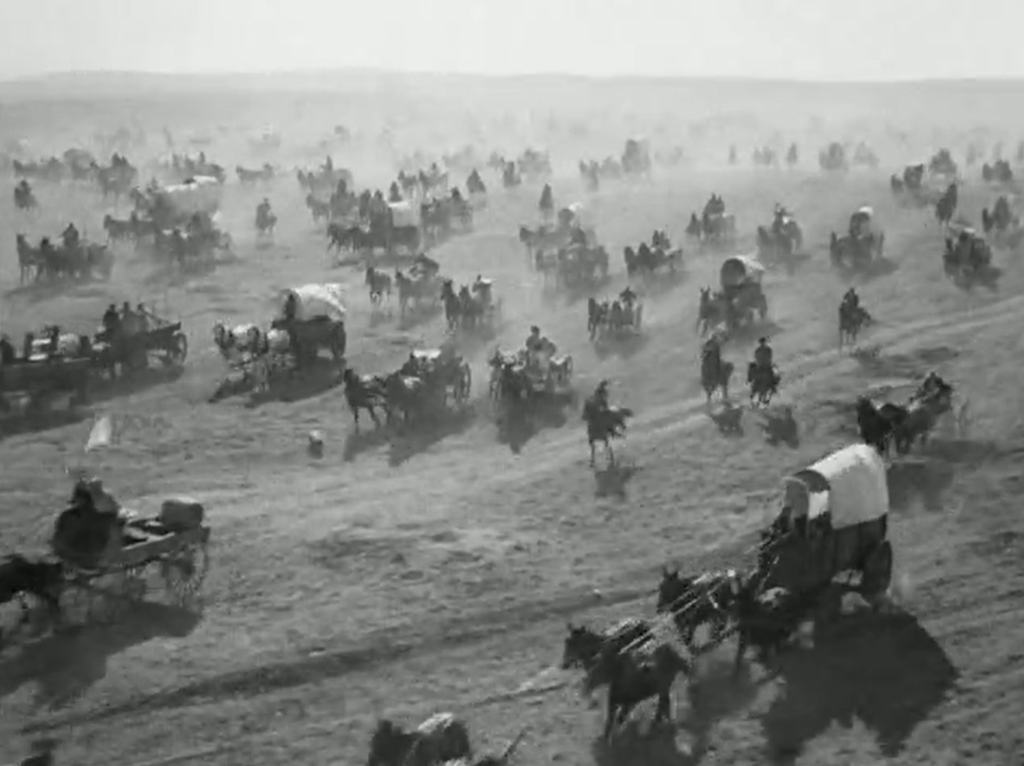|
Genres, Themes, Actors, and Directors:
- Historical Drama
- Irene Dunne Films
- Settlers
- Westerns
Response to Peary’s Review:
This early screen adaptation of Edna Ferber’s novel — which Peary refers to as a “tiresome… soap-opera western epic” — remains notorious for its status as one of the first (and least deserving) Oscar winners for Best Picture. As Peary notes, it comes across today as “extremely dated”, and boasts “uniformly awful” acting — particularly by “matinee idol” Richard Dix, who “gives an unbearably hammy, deep-voiced” performance.

Although Peary gives faint praise to traces of “unexpected feminism” in the storyline (they’re faint indeed):

he inexplicably argues that this is “undermined by some racism” — an odd statement, given that Yancey’s fearlessly anti-racist stance is one of the film’s genuine redeeming factors. Another is the infamous opening “land rush” sequence, though it unfortunately establishes a standard of excitement which the remainder of the film can’t possibly live up to. The primary problem lies in the filmmakers’ daunting attempt to adapt an epic novel spanning 40 years: numerous life-changing events — including Yancey abandoning his family for years on end — are necessarily given short-shrift, and seriously compromise what could otherwise have been an insightful portrait of a pioneer marriage.

The rushed ending is particularly egregious, and makes little sense on any level.
Redeeming Qualities and Moments:
- The impressive opening “land rush” scene

- Yancey’s refreshingly anti-racist attitude:
“If you knew anything at all … you’d realize that a Cherokee is too smart to put anything in the contribution box of a race that’s robbed him of his birthright.”
Must See?
Yes, but only for its historical status as an early Best Picture Oscar winner.
Categories
Links:
|
One thought on “Cimarron (1931)”
First viewing. A tentative once-must – though mainly for those with a deeper interest in cinema history and US history. It’s a bit of a chore to get through but it sure beats the remake.
I think Peary goes overboard in calling the film “tiresome”, “dated” (using that word improperly, as many often do) and with “uniformly awful” acting. While it certainly could be better, it’s not that bad – and I’ve seen a good number of much worse films from the ’30s. It’s at least watchable.
One of its main assets is its sense of time and place. A good deal of effort went into recreations of the various periods; atmosphere helps in maintaining our interest as the film progresses.
While they both overplay slightly, I didn’t have much difficulty with the chemistry between Dix and Dunne. What strains credulity a bit is not only that Dunne’s character has such difficulty remembering that she’s married to a progressive, but that she spends most of her life learning – and re-learning and re-learning… and re-learning… how not to be a bigot (or closed-minded). You’d think she’d get the meaning of acceptance and tolerance into her head once she gets the hang of it… but then there’s some new issue that she is slow to embrace.
It’s true that the film’s opening is eventually a hard act to follow and there’s little else in the film that’s as exciting. (Watching that sequence, one can’t help but be reminded of what we now know as ‘Black Friday’ – with Americans clamoring for ‘deals’, as they did in the old West. There’s human nature for you: the more things change, the more they stay the same.)
Still… some sequences are rather strong: i.e., Dix presiding at the church sequence in the saloon – and, later, his defense of the ‘harlot’ Dixie Lee in the trial scene (probably my favorite scene in the film).
Sidebar: It’s always a delight seeing Edna May Oliver – no less so here as the social climber Mrs. Wyatt. Her timing and delivery, as always, are unique.